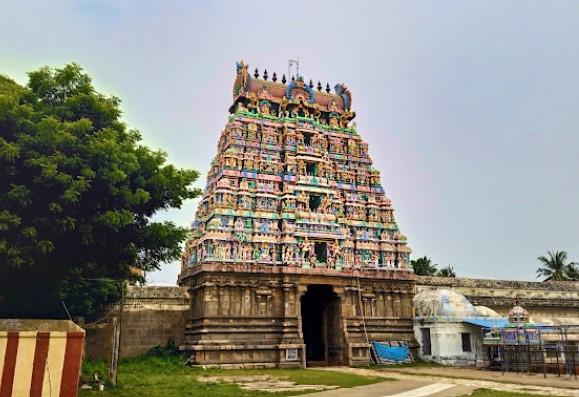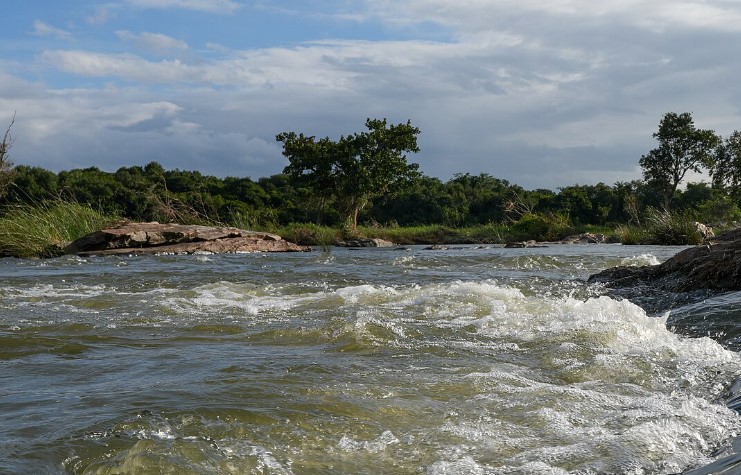- The Vedaranyeswarar Temple, located in Vedaranyam, Tamil Nadu, is a significant Hindu shrine dedicated to Lord Shiva. It is the 242nd Thevaram Paadal Petra Shiva Sthalam and the 125th on the southern bank of the River Kaveri in Chozha Nadu. Historically known as Thirumaraikadu during the Thevara era and later as Vedavanan in the 15th century, it is now called Vedaranyam.
- This temple is notable for being praised in six of the twelve Thirumurais, composed by Tamil saint poets known as the nayanars. Built during the reign of Aditya Chola (871-907 CE), it commemorates his victory in the Thiruppurambiyam battle and features inscriptions from the Chola period.
- The temple complex includes a five-tier Raja Gopuram and two Prakarams. The main deity, Vedaranyeswarar, is represented by a Swayambu Lingam, and his consort is Veda Nayaki Amman, also known as Veena Vadha Vidushani. The temple is recognized as one of the Saptha Vidanga Sthalams and one of the 64 Sakthi Peetams, referred to as Sundari Peetam.
- Daily rituals are performed six times from 5:30 a.m. to 8 p.m., and the annual Brahmotsavam attracts thousands of devotees. Other significant features include the sthala vriksham (sacred trees) Vanni Maram and Punnai Maram, and the teerthams (sacred waters) Manikarnigai and Veda Teertham. Thiyagarajar, worshipped here as Bhuvani Vidangar, performs a dance known as Hamsa Nadanam.
PURANIC SIGNIFICANCE:
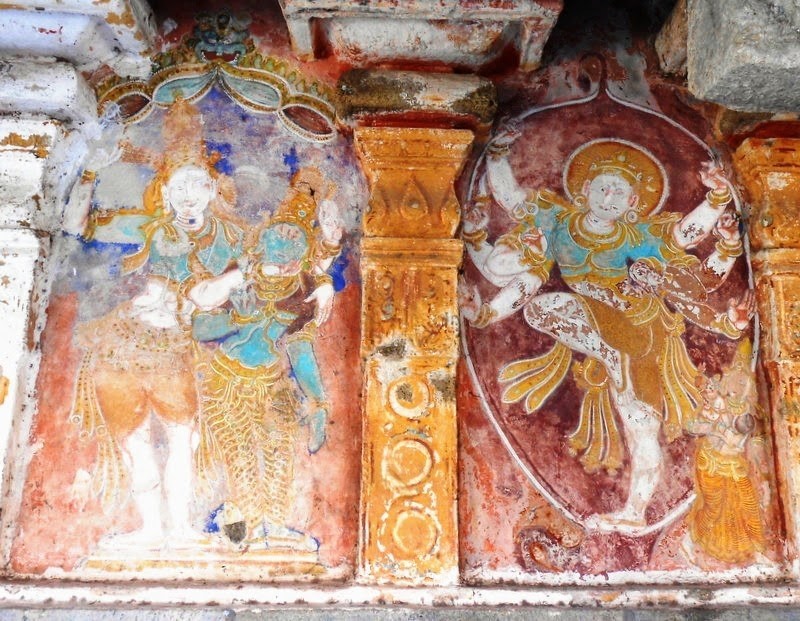
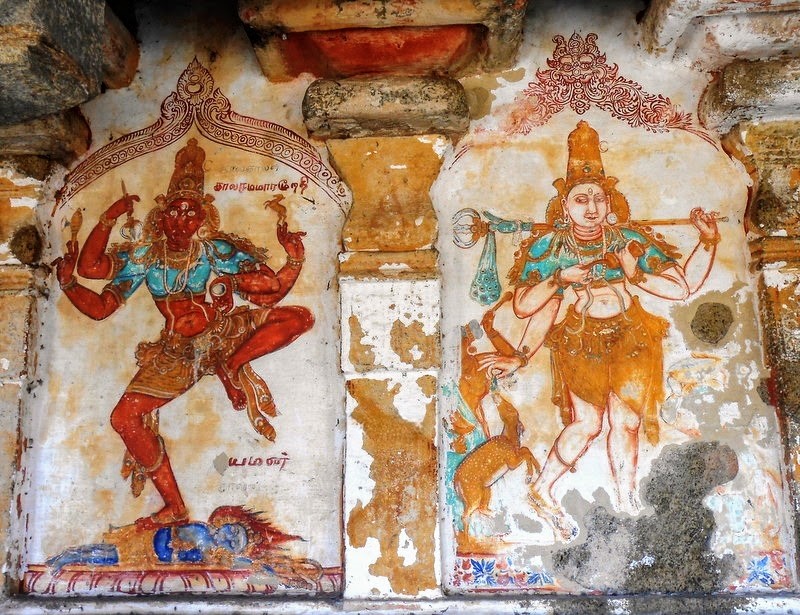
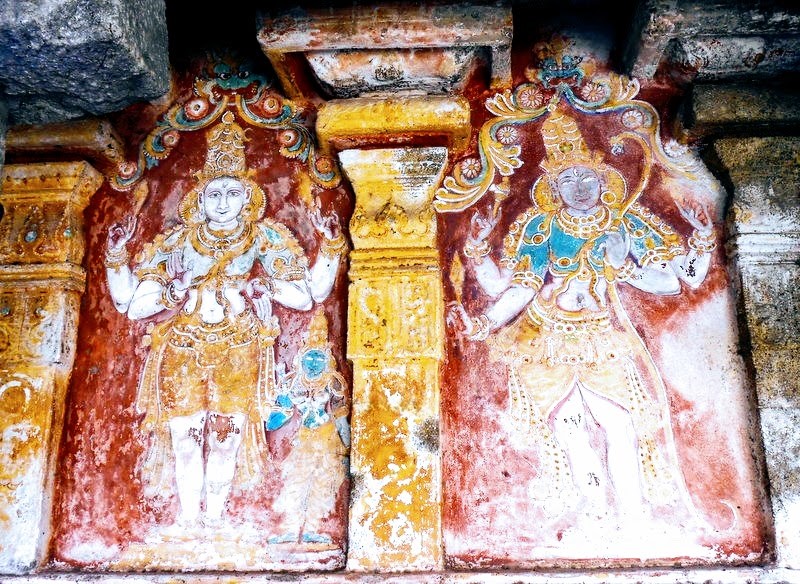
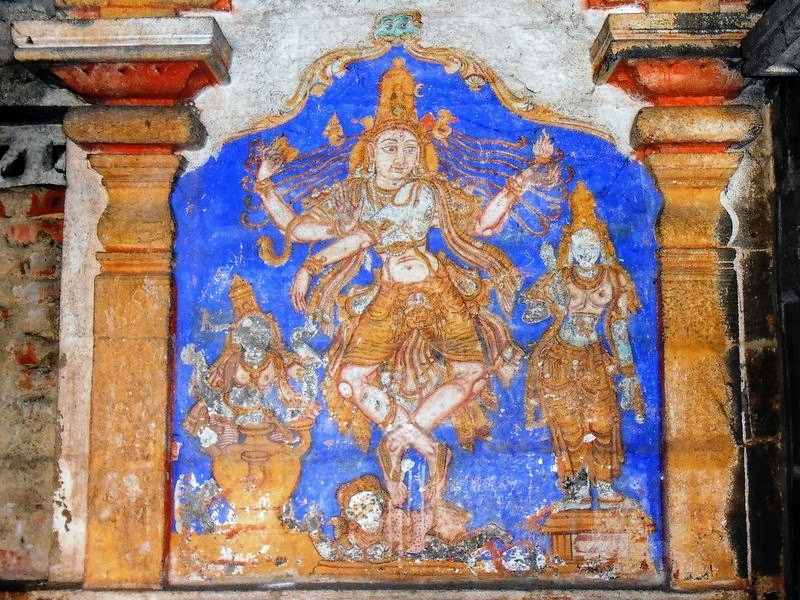
Thirumaraikadu:
The town Vedaranyam is named after Vedaranyeswarar, the presiding deity of the Vedaranyeswarar Temple, a temple dedicated to Shiva. The place was earlier known as "Thirumaraikadu", meaning the place where Vedas, oldest scriptures of Hinduism, originated. The 7th century Saiva canonical work Tevaram by Appar and Tirugnanasambandar mentions the place as "Thirumaraikadu".
Etymology:
As per Hindu legend, the Vedas worshipped Shiva in this place, giving the name "Vedaranyam" to the place.
Rama worshipped Shiva here:
According to another Hindu legend, Rama, the seventh avatar of god Vishnu, is believed to have visited Vedaranyam to absolve himself from sins committed in the war against the demon king Ravana. The footprints of Rama are preserved in a place called Ramar Padam near Vedaranyam.
Vedas locked the Main Entrance of the Temple after worshipping Lord:
- On their journey to various Shiva temples spread over the state, celebrated Saivite Saints Thirugnana Sambandar and Tirunavukkarasar (Appar) came to Thiru Marai Kadu Temple. They sang Pathigams-set of 10 verses- at each temple in praise of Lord Shiva. They were shocked to see that the main entrance of this temple was closed. They also saw devotees entering the temple through a side entrance. They enquired with the priests how this happened. They were told that the Vedas worshipped Lord Shiva here and returned after closing the door.
- Hearing that Vedas, the holy scriptures of land themselves worshipped the Lord here, Gnanasambandar requested Tirunavukkarasar – Appar to sing a hymn to the Lord to open the doors. Appar, tears flowing from his eyes sang ten verses beginning with the line “Pannin Ner Moshiyal” and begged the Lord to open the doors of the temple. Excited by the graceful response of the Lord, both entered the temple through the main entrance and worshipped the Lord. While coming out, Appar wished Gnanasambandar to sing a hymn so that doors could be opened and closed for the worship of the devotees as in all temples.
- Child saint Sambandar sang a Pathigam – 10 verses – beginning with the line “Chathuram Marai” closing the door. Since then, the main doors of the temple began to function in the usual manner as in other temples.
Agasthiyar had darshan of divine marriage:
Agasthiyar had the darshan of Siva and Parvathy marriage in this place.
Rat rebirth as Mavali Chakravarthy:
A rat climbed on the lamp, to drink the ghee in it. The light was becoming dim. The rat tried to taste the ghee, in this act the string which was in the lamp got disturbed, and it started glowing bright. By this act which happened without the knowledge of the rat, in his next birth it was Mavali Chakravarthy.
Birthplace of Paranjothi Adigal:
This place Thirumarai Kadu is birthplace of Paranjothi Adigal who is the composer of Thiru Vilaiyadal Puranam (Siva Leela).
People worshipped Shiva here:
Sage Agasthiyar, Gowthamar, Vishwamitra, Vashista, and Lord Brahma are reported to have worshipped Lord Shiva at this thalam. Great emperors Manu, Mandhadha, Dasaratha, Lord Rama, Pandavas, and Mahabali were blessed by Lord.
Vedas worshipping Shiva in the form of Trees:
The “Four Vedas” which worshipped Lord Shiva here, left the place when the kali yugam started and they are worshipping Lord Siva in the form of trees and Vriksham. The place is called as “Vedaranyam.”
Vedaranyam: The Sacred Abode of Vedaranyeswarar
The town of Vedaranyam derives its name from the presiding deity of the Vedaranyeswarar Temple, dedicated to Lord Shiva. Historically known as "Tirumaraikadu," which translates to the place where the Vedas-Hinduism's oldest scriptures-originated, this site holds profound significance in Hindu tradition.
Historical References
The 7th-century Shaiva canonical work, the Tevaram, authored by saint poets Appar and Tirugnanasambandar, mentions this sacred site as "Tirumaraikadu." According to Hindu legend, the Vedas themselves worshipped Shiva here, leading to the name "Vedaranyam."
Legends of Rama and the Vedas
Another captivating legend associates the town with Lord Rama, the seventh avatar of Vishnu. It is believed that Rama visited Vedaranyam to absolve himself of sins incurred during the war against Ravana, the king of Lanka. A site known as Ramar Padam, where Rama’s footprints are preserved, stands as a testament to this legend.
Mystical Tales
Local lore also suggests that the Vedas locked the temple gates after worshipping Shiva, underscoring the sanctity of the place. It is said that sage Agastya witnessed the divine marriage of Shiva and Parvathi from this temple.
Additionally, a whimsical tale recounts how a rat, tickled by the flame of a ghee lamp, spread light throughout the temple. Shiva blessed this rat, and it was reborn as King Mahabali in its next incarnation.
Spiritual Significance
The temple has been a site of deep spiritual activity, with notable sages like Nachiketa and Svetaketu performing tapas (penance) in the vicinity. These legends and historical references contribute to the rich tapestry of Vedaranyam’s spiritual heritage, making it a revered destination for devotees.
Historical Significance and Legends
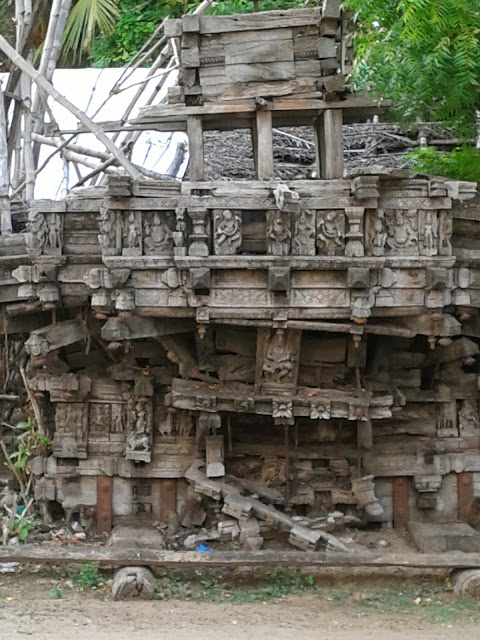
- Legend of Sage Agasthya: Lord Shiva sent Agasthya to the south to balance the earth during his wedding with Parvati. Shiva later gave darshan of the divine wedding to Agasthya at this temple.
- Veera Hathi Legend: Lord Rama, cursed with the Brahmahathi dosha for killing a demon, prayed to Ganapathi here. Ganapathi kicked away the sin, earning the name Veera Hathi Chetha Ganapathi.
- Connection with Thevaram Hymns: Saint Thirugnanasambandar sang the famous Kolaru Pathigam at this temple to ward off planetary ill-effects.
- Association with Saint Arunagirinathar: Murugan here is praised in the Thirupugazh hymns by the saint Arunagirinathar.
- Sage Paranjothi Munivar, the author of Thiruvilayadal Puranam, was born in this region.
Cultural Importance
- The temple is part of the Saptha Vidanga Sthalams, with the dance of Shiva here known as Hamsa Natanam.
- Vedaranyeswarar is praised in the Thevaram Hymns by saints Thirugnanasambandar, Appar, and Sundarar.
- The four Saiva Acharyas look at the supreme dance of Lord Shiva within the temple precincts.
ADMINISTRATION:
The temple is approximately 45 km from Nagapattinam and is maintained by the Hindu Religious and Endowment Board of the Government of Tamil Nadu, continuing its rich tradition and spiritual significance.
